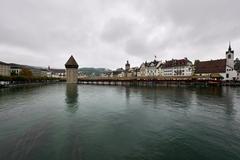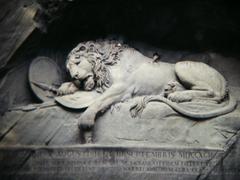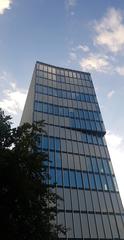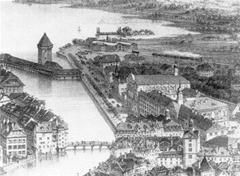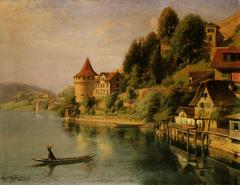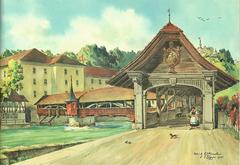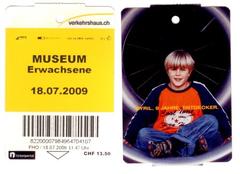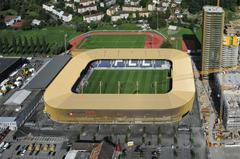Visiting the Watchtower Heuturm and Musegg Wall in Lucerne, Switzerland: Tickets, Hours, and Tips
Date: 14/06/2025
Introduction
Lucerne, Switzerland, boasts some of the best-preserved medieval landmarks in Europe. Among its most significant are the Wasserturm (Water Tower), the Musegg Wall with its iconic towers—including the Musegg Tower—and the Lucerne Watchtower. Together, these historic sites offer a window into the city’s medieval fortifications, urban defense strategies, and rich cultural identity.
The Wasserturm, dating from around 1300, stands alongside the famous Chapel Bridge (Kapellbrücke) and has served as a prison, treasury, and symbol of Lucerne’s independence (Nomads Travel Guide; Say Yes to the Trip). The Musegg Wall, constructed in the late 14th century, stretches nearly 870 meters and features nine surviving towers, several of which are open to visitors. Additionally, the Lucerne Watchtower reflects the Swiss tradition of communal vigilance and is an essential piece of the city’s defensive history (Switzerland Highlights; Luzern.com; Swiss National Museum).
This guide covers historical context, visitor information (including opening hours and ticketing), accessibility, travel tips, and nearby attractions to help you plan an enriching visit. For the latest updates, consult Luzern Tourism and official resources.
Historical Development of the Wasserturm (Water Tower)
Medieval Origins and Strategic Importance
The Wasserturm, built around 1300, is one of Lucerne’s most remarkable medieval structures. As part of the city’s original fortifications, its octagonal shape and thick limestone walls signified military strength and provided a vantage point over the River Reuss (Nomads Travel Guide). Over the centuries, it played varied roles: lookout, prison, torture chamber, archive, and treasury (Say Yes to the Trip).
Architectural Features
The tower’s distinctive octagonal design set it apart from other medieval towers. Its upper levels allowed surveillance, while lower chambers offered secure storage (Nomads Travel Guide). The adjacent Chapel Bridge, from 1333, created a fortified crossing that merged defense with commerce.
Cultural Role
The Wasserturm is a symbol of Lucerne’s autonomy, featured on its coat of arms and widely used in tourism branding (Lucerne History; Hotel Sempachersee). It also remains a focus of community celebrations such as the annual “Lozärner Fäscht”.
Visiting the Wasserturm: Practical Information
Visiting Hours and Tickets
- Opening Hours: Access is primarily via guided tours and special events, generally from April to October. Schedule varies; check current listings.
- Tickets: Available online, at the Lucerne Tourist Information Center, or as part of tour packages (often combined with the Chapel Bridge).
- Prices: CHF 10–20 for adults, with discounts for children, seniors, and groups.
Accessibility
Due to narrow stairs and historic architecture, the Wasserturm is not fully accessible for those with mobility challenges. Contact tourist information for assistance or recommendations.
Tips and Nearby Attractions
- Best Times: Weekday mornings in spring or autumn for a quieter experience.
- Nearby: Chapel Bridge, Old Town, Lake Lucerne, and the Musegg Wall.
- Events: The area is especially photogenic at sunrise/sunset and during local festivals.
Preservation and Restoration
Throughout the 19th and 20th centuries, Lucerne prioritized the conservation of the Wasserturm and Musegg Wall, even as other fortifications were removed (Lucerne History). The 1993 Chapel Bridge fire spared the Wasserturm but triggered renewed commitment to preservation (EAA Kapellbrücke). Today, restoration uses advanced methods like structural monitoring and digital engagement tools for education (EAA Kapellbrücke).
Visitor Experience and Accessibility
Guided tours grant access to otherwise restricted areas and interpretive exhibits (Jaseph). Visitor numbers are managed to protect delicate interiors (EAA Kapellbrücke). The tower is a highlight on walking routes through Old Town and remains a community cultural venue (Hotel Sempachersee).
Wasserturm FAQ
Q: What are the opening hours?
A: Guided tours and special events are offered mainly April to October. Check Luzern Tourism for current times.
Q: How do I purchase tickets?
A: Online, at the Tourist Information Center, or as part of combined tour packages.
Q: Is it wheelchair accessible?
A: No, but alternatives can be discussed with tourist information.
Q: Are English tours available?
A: Yes, advance booking recommended.
Q: What’s nearby?
A: Chapel Bridge, Old Town, Musegg Wall, and Lake Lucerne.
Musegg Wall: Visiting Hours, Tickets, and Historical Insights
Overview
The Musegg Wall, with its nine preserved towers, is a striking example of medieval fortification and a cultural symbol of Lucerne (switzerland-highlights.com). Built around 1370, it originally had 30 towers and now offers public access to four: Zyt, Männli, Schirmer, and Wacht (luzern.com).
Architectural and Cultural Significance
Each tower had specialized functions—for instance, the Zyt Tower’s early-striking clock is a visitor highlight. Towers also remain tied to historic guilds, reflecting the wall’s civic importance (switzerland-highlights.com; luzern.com).
Restoration and Urban Integration
Recent restorations have preserved the wall and towers while allowing safe public access. The Musegg Wall enhances Lucerne’s historic skyline and provides panoramic city views (switzerland-highlights.com).
Ecology and Sustainability
The area includes urban green spaces like Hof Hinter Musegg, which blends historic architecture with sustainable farming and supports biodiversity (switzerland-highlights.com). Lucerne promotes eco-friendly tourism, accessible infrastructure, and environmental education (luzern.com; houseofswitzerland.org).
Visiting Information
- Opening: April–October for public towers; closed November–March.
- Admission: Free, though donations are encouraged.
- Tours: Guided tours offered; check official listings for availability.
- Accessibility: Supported by the OK:GO Initiative, but steep stairs may limit access for some (luzern.com).
- Travel Tips: Arrive by train or public transport, wear sturdy shoes, and bring rain gear, especially in June (weather25.com).
Musegg Tower: Guide and Practical Tips
- Location: North of the Reuss River, a 10-minute walk from Chapel Bridge.
- Opening Hours: 8:00 AM to 7:00 PM, April–October.
- Admission: Free.
- Experience: Climb wooden staircases for city and Alpine views. Four towers are open: Schirmer, Zyt, Wacht, and Männli.
- Tours: Self-guided and guided options are available.
- Tips: Visit early or late in the day; wear comfortable shoes; mind the steep, narrow stairs; no onsite amenities—use facilities in Old Town.
Lucerne Watchtower: History, Hours, and Conservation
Historical Significance
The Lucerne Watchtower, like others across Switzerland, formed part of an early warning system using signals and beacon fires to mobilize communities in times of danger (Swiss National Museum).
Visiting Details
- Hours: 9:00 AM to 6:00 PM (April–October), with summer hours until 8:00 PM.
- Tickets: CHF 10 for adults, children under 16 free. Group discounts available.
- Accessibility: Limited, but some assistance is possible.
- Tours: Guided tours daily at 11:00 AM and 3:00 PM; pre-booking is advised.
Integration with Lucerne’s Festivals
The watchtower is woven into local traditions and serves as a backdrop to events like Lucerne Fasnacht (Work in Lucerne).
Nearby Sights
Visit the Chapel Bridge, Musegg Wall, Old Town, and Lake Lucerne, all within easy reach.
Conservation and Sustainability
Lucerne upholds Swiss conservation policies through education, community involvement, and green transport options (Generis Online; Destination Abroad). Visitors are urged to use public transport, minimize waste, and respect local customs (Switzerland Insider).
Summary and Visitor Recommendations
The Wasserturm, Musegg Wall, and Lucerne Watchtower offer an immersive journey through medieval Lucerne, combining architectural marvels, vibrant traditions, and modern conservation efforts (Nomads Travel Guide; Switzerland Highlights). To get the most out of your visit:
- Plan during shoulder seasons for fewer crowds.
- Take guided tours for deeper insights.
- Support local businesses and conservation efforts.
Further Information
For detailed guides and interactive resources:
- Take a virtual tour of the Wasserturm Lucerne
- Musegg Wall and Towers
- [Chapel Bridge Lucerne: History and Visiting Tips]
- [Exploring Lucerne’s Old Town]
- [Musegg Wall: Lucerne’s Medieval Fortifications]
Sources
- Nomads Travel Guide
- Say Yes to the Trip
- Lucerne History
- Hotel Sempachersee
- EAA Kapellbrücke
- Switzerland Highlights
- Luzern.com
- House of Switzerland
- Weather25.com
- Swiss National Museum
- Work in Lucerne
- Generis Online
- Destination Abroad
- Switzerland Insider
- Luzern Tourism
